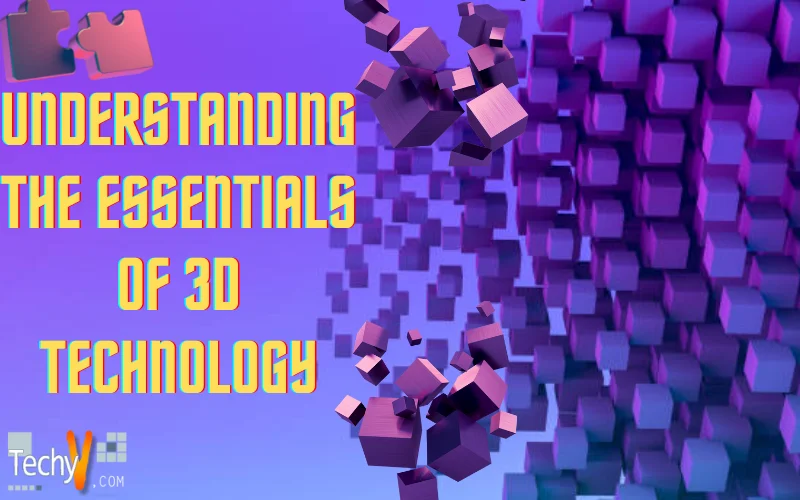Understanding the Essentials of 3D Technology
What is 3D Technology?
The use of 3D Technology started since 1800s. Every day, we see things equally with both our eyes. Both eyes are separated by 2 ½ inches and this is a bit different viewpoint that each of our eyes sends two dissimilar images to our brain which is also called as the stereoscopic imagery. Our brain melds the two images jointly and recognizes an image of a single thing with depth.
The main purpose of 3D displays is to give both eyes a slightly peculiar image of a single plane such as a TV set, hologram, PC monitor and many more, to mimic what both eyes can see if we put those objects ahead of us. If both eyes acquire a slightly peculiar image of the two identical things, then that only means our brain will start working to meld those images together and the illusion or the concept of 3D is already been made.
All this may sound simple to anyone of you, but the question is how hard it is to make 3D works in the real world? It has spawned various techniques to make it work and that is what we will be discussing below.
How Does 3D Technology Work?
3D technology has been with us for quite a long time now. It become extensive and developed some method to view still images and pictures so we can enjoy 3D films, TV shows and video games. Here are some pictures with details about how 3D technology work.
Stereoscopy
Stereoscopy is a process of creating an impression of 3D by means of our eyes and brain. The range of both eyes are approximately 50mm to 75mm and both of it sees a slightly peculiar images and objects. You can try to hold a pen or any thin object and then close one eye and switch with the other one. Try to do this alternately.
The sample image above is similar but a bit offset. If you can see the line behind the head, it is a slightly peculiar objects that enters our brain, from which point that it’s doing a dynamic geometry to make up for the difference between the two objects. That difference is essentially called as 3D, as your brain is doing the reality that you are receiving two peculiar views of a similar thing.
What We Watch?
Films
3D started with one of its pioneers, the film. 3D can be achieved in motion pictures by two different ways: the anaglyph and the polarize glasses.
Anaglyph refers to the red and blue glasses we normally wear. If we project a film with those colors which is one in red and one in blue, your eyes will have a different view or outlook while the brain will mix the 3D effect together. You can also use different color as long as they are distinctively enough to separate on screen.
The polarized glasses make an excessive use to the reality that the light can be polarized. An example is, when an image is projected with two different directions. One may be in vertical position while the other one is in horizontal position. The polarized glasses will allow the polarization on one eye in horizontal position while the other eye in vertical position.
Television
Because our television is not silver-coated, the following ways will get you 3D at home.
- Active 3D is the most common 3D that includes wearing glasses like the one on Robocop movie. The glasses are connected to your TV then open and close those shutters in your eyes, which allow your one eye to look at the screen at a time.
- Passive 3D is running like one of your 3D film. These TV have a small, lenticular screen above the standard display. This technology does not require expensive and big glasses; the quality of the image can be limited. Each eye can only see one half of your screen at a given time.
How It’s Made
Cameras
Cameras are used by filmmakers to get a 3D image. They essentially need two versions of a scene that is filmed from an exact accurate angle as if both eyes are seeing the same exact scene. They also need to triangulate the range between two cameras assuring they focused on the same object. The filmmakers also need to zoom and track, move with the same required speed, hence the photos won’t sync up.
Computer Graphics
To make a 3D film like Toy Story 3, animators made two versions of frames to be viewed by each eye. A movie that is made by computers, don’t need any cameras. It is much easier to perfectly synced images and correct mistakes in production. The downside is this will require a lot of time to perfectly do this.
Future
One of the biggest problems of the 3D technology world is the image being equally divided. The lenticular screens transmit the image half to every eye, shutter lens glasses is blocking each eye from viewing an image, and the polarized glasses transmit the displayed light half to each eye. Our eyes certainly need 50 frames/sec. to be able to see the film as one constant image. The 3D technology divide that so the eye can only see 25 frames/sec. and make a disturbing flicker. On the modern technology world, the frame is significantly adding the frame rate so that people can attain the 3D illusion. There are also some improvements in computing and memory in most handheld products. There are also added prototypes for laptops, cameras, video camera and various technologies.
We should await the coming of the autosteroscopy in our technology on the coming year wherein 3D will not require glasses anymore. An example for this is the Nintendo 3DS from Microsoft’s newest gaming device.


















